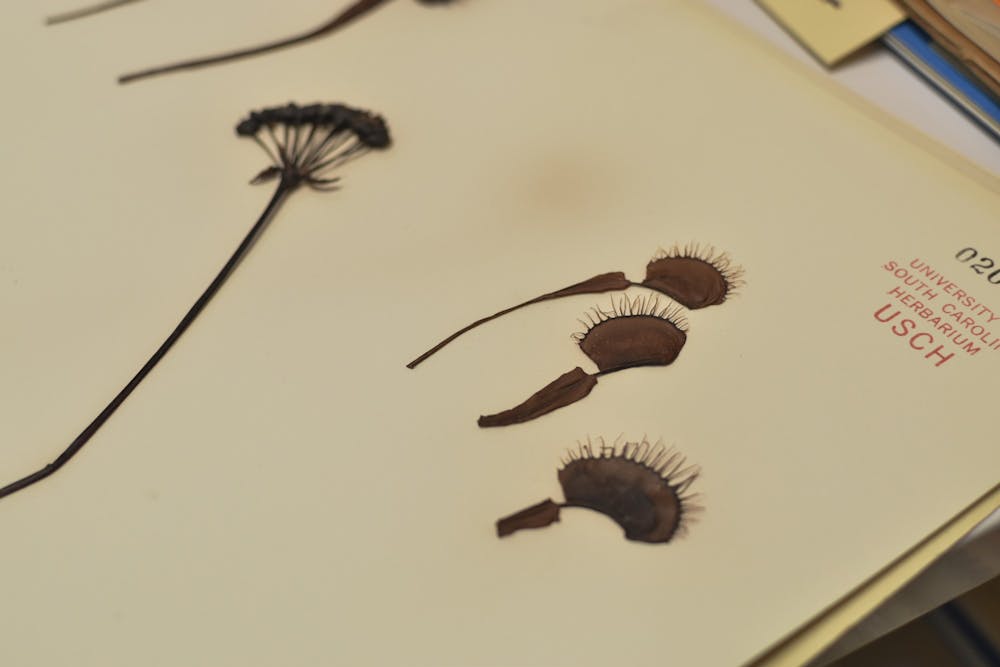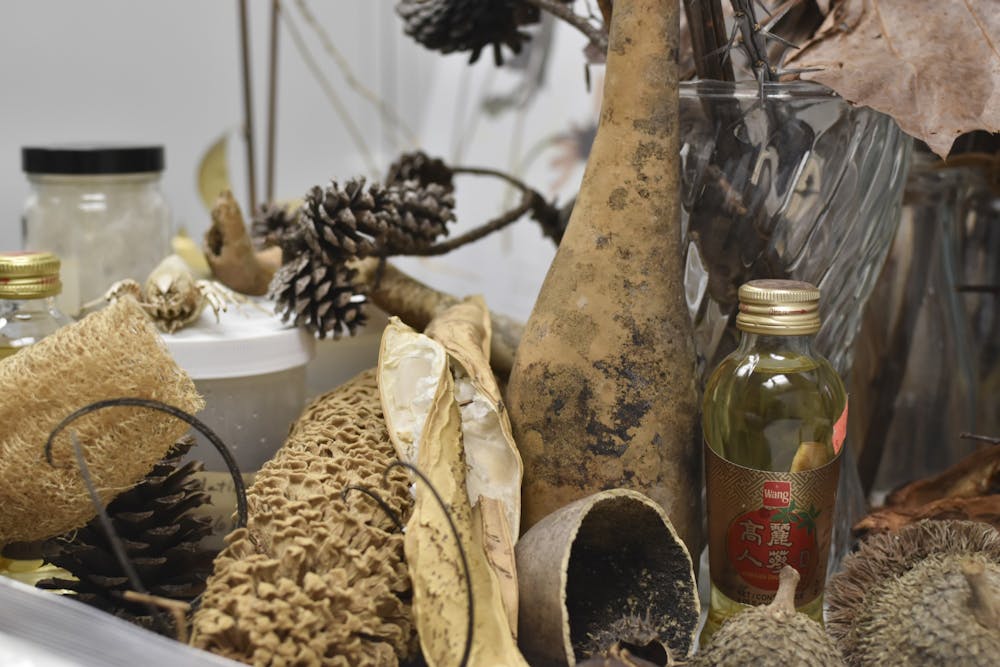Plants. Green plants, tall plants, poisonous plants, carnivorous plants, flowering plants. Our world, our country and our state is full of plants big and small, and they all come together to create the beautiful scenery we see everyday. Arboretums get a lot of love for their beautiful collections of plants, all shown in their rawest, most beautiful form. But there’s another method of observing and conserving plant life, and that would be the University Herbarium, located in the Coker Life Sciences Building. Collections of plants from all over South Carolina and even the world are dried and pressed into sleeves for preservation and identification purposes. Since this is a place many people aren’t aware of, it seemed like a good idea to reach out to the curator of the herbarium himself, Dr. Herrick Brown, to show exactly what the herbarium does, what they hope to accomplish and what fun adventures await in the field of botany.
First, it's important to understand the purpose of the herbarium and the process they go through to catalogue their thousands of plant specimens. Dr. Brown stated that an herbarium is a collection of dried and preserved plant specimens. He and his team of botanists and volunteers go out and collect live specimens of plant species, ranging from grasses to flowers to mints and everything in between. They press and dry the specimens in order to flatten them, and then the flattened specimens are mounted and secured to a paper. The botanists will identify information like the species name, the precise coordinates the specimen was retrieved and any characteristics or features that are defining or have changed due to the drying and pressing process. All this information is compiled onto the paper with the plant, they are stored with other similar species and the information is uploaded to a database with a picture of the plant. UofSC's herbarium, according to Dr. Brown, currently houses over 130,000 plant specimens. Most of these plants were retrieved and catalogued in South Carolina, but many come from exchange agreements with other universities around the world, with collections coming from as far as Vietnam.

One of the more fascinating aspects of the herbarium, in my opinion, is the conservation aspect, and that was the next question for Dr. Brown. When each specimen is extracted, its exact location is marked, and several species are all taken from the same area at a time. This allows them to recreate an image of what the habitat looked like, as well as produce distribution maps to determine how dense populations are, painting a picture of the habitat when the plants were gathered. This is absolutely crucial to monitor in terms of climate change and conservation, since comparing specimens collected from the same place in different times tells us how these environments are changing. Understanding these changes can help to shape measures to protect or restore these environments. For endangered or at-risk species, they also perform judicious sampling, a technique that gathers the flowering part of the plant without damaging the root system or killing the plant. All of this makes the herbarium an excellent way of conserving plant specimens, their knowledge and their habitats
If any of this information sounds interesting to you, Dr. Brown actually runs classes where you can participate in some of these activities and learn more about the process. Dr. Brown instructs a class on fall and spring flora in the fall and spring semesters respectively. While in the class, students will take tours to identify flora around campus, with the final goal being to memorize and identify 150 different plant species. The class also hosts a tour to the herbarium. So if you want to be a botanist or are interested in learning more about our local flora, try enrolling in a class with Dr. Brown next semester.
The UofSC herbarium is a little known but very beloved place. Their work in the identification and preservation of plants is something to admire. Their appreciation of nature and all its wonderful eccentricities is incredibly inspiring. So if you’re at all interested in biology, or just want to see some cool plants, enroll in one of Dr. Brown’s classes or take a short trip to the herbarium.



